8 November 324
Constantine founds Constantinople.
8 November 1778 Sunday
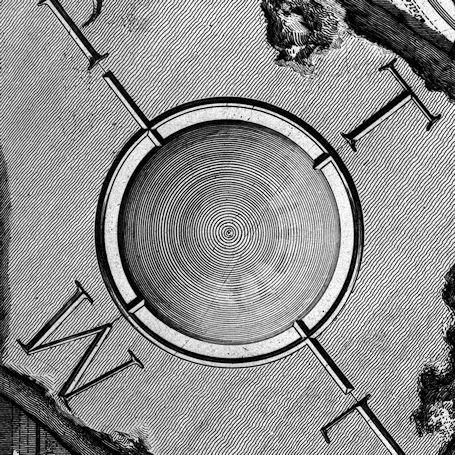 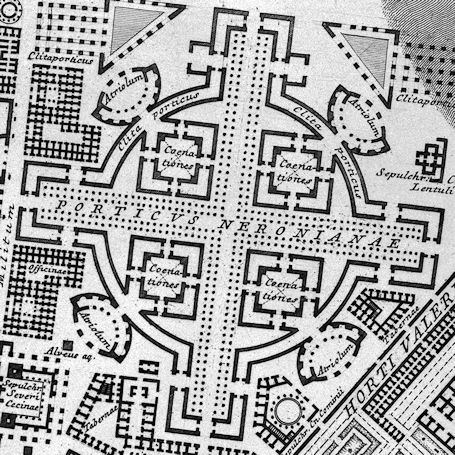
2004.04.01 12:47
Re: "crossology"
1 April 1999 is when I first learned of St. Helena as the mother of Constantine and of her activity as builder of highly significant/original Christian basilicas. Five years ago it was Holy Thursday, and ten years ago 1 April was Good Friday, when a close friend died right in the middle of the afternoon.
"Calendrical Coincidence"
Interesting how this stuff happened in Philadelphia, where Broad St. and Market St. manifest the largest cardo and decumanus in the world--a planned and then 'concrete' crossing of two main urban street.
Initially, it was data, actually the absence of data within Piranesi's Ichnographia Campus Martius that led me to look for the 'architect' of Rome's Constantinian Basilicas, buildings which should be present within the Ichnographia, but are not--Rome's pagan edifices are present, but not the (contemporaneous) Christian ones.
Much of my focus over the last five years has concentrated on the time between 28 October 312 (when Constantine 'converted' from leading his troops into battle under a pagan guise/symbol to leading his troops into battle under a Christian guise/symbol) to sometime late 328/early 329 (when, I believe, Eutropia died). This period in time is when Christian church building was, as we say now, 'booming' throughout the Roman Empire for the first time, and it was Helena and Eutropia that were mostly responsible for all this (architectural) activity. From the very start, it has intrigued me that women, and not men, played this important historical role--and not just any women, but 'twin basilissas'.
Not too long ago, countable days actually, I first learned of Melania the Younger, and how her (enormously expensive) family estate just outside the walls of Rome at the Salarian Gate, was one of the great properties (along with the Gardens of Sallust) that were plundered when Alaric and his Visigoths broke into (at the Salarian Gate) and sacked Rome for the first time. The Visigoths initially camped for many months outside the walls of Rome (near the Salarian Gate) thereby starving the city by disrupting all deliveries of grain from Africa to the city. The Salarian Gate, the Gardens of Sallust, and the Gardens Valeriani (Melania's inheritance) are all delineated within Piranesi's Ichnographia Campus Martius right where they are supposed to be. Interesting, right next to this complex of buildings/structures, Piranesi also delineates a Porticus Neronianae, a completely fictitious building in the shape of a large cross within a circle (a composition, coincidentally, that follows the circle/square juncture pattern similar to the Timepiece gauge of the theory of chronosomatics). Within a day of assimilating all this new data, I came to see how the inner circle of the Porticus Neronianiae matches the circle of the compass/north arrow that Piranesi also delineated within the Ichnographia, and I came to see how if you rotate the cross of the Porticus Neronianae 45 degrees, its four points then correspond exactly to the four cardinal points of global direction. The Porticus Neronianae of Piranesi's Ichnographia Campus Martius is the X that marks the spot where the first attacking Visigoths camped. [There are even more 'symbols' to interpret here, like 'shifting winds' and Nero as anti-Christ precursor, but more on that latter.]
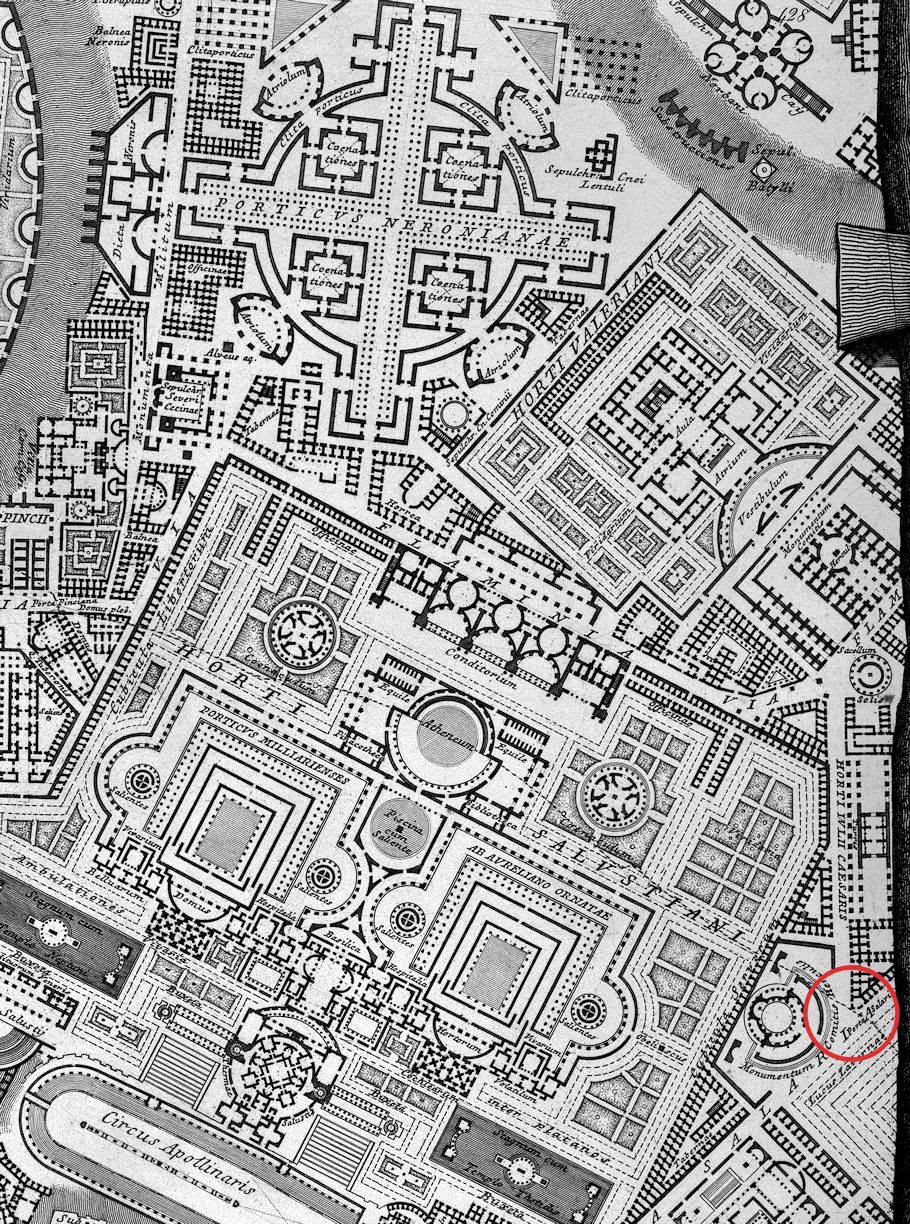
The Horti Valeriani is situated in the upper right corner, directly above the Horti Sallustiani, which occupies the entire bottom portion of the plan. Note that the Aurelian Wall is delineated via a bowing dotted line, which is visible directly above the words 'Horti' and 'Sallustiani'. The position of the Salarian Gate is indicated along the dotted line, here circled in red.
2007.09.08
"The directional indices...
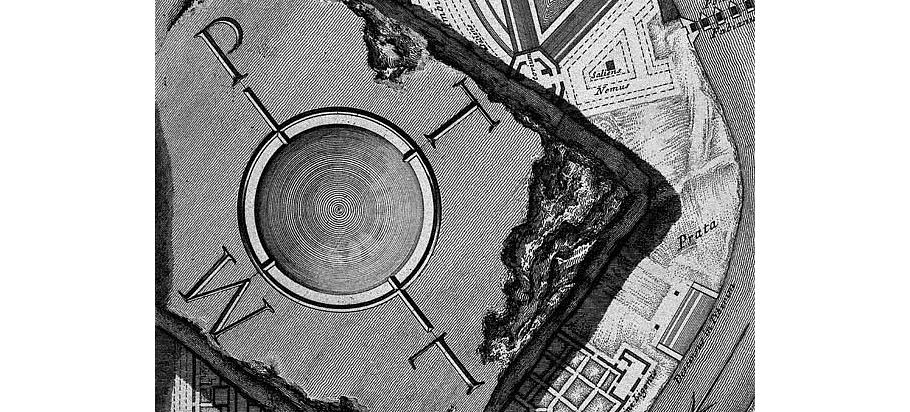
"The directional indices T-M-P-L suggest templa, however their use is fairly conventional. Tramontane, literally "between the mountains", is the name of the north wind or the north star as seen over the Alps. Meridióne is south, from the Latin meridianis for midday when Dianus, god of light and the sun, and male counterpart of Diana, is highest in the sky. Pončnte is west or the west wind, possibly from the Latin ponere "to put, or set down" in relation to the setting sun, while Levante is east, possibly from levare "to raise" in relation to the rising sun."
R. James Aitken, Piranesi-Vico-Il Campo Marzio: Foundations and the Eternal City.
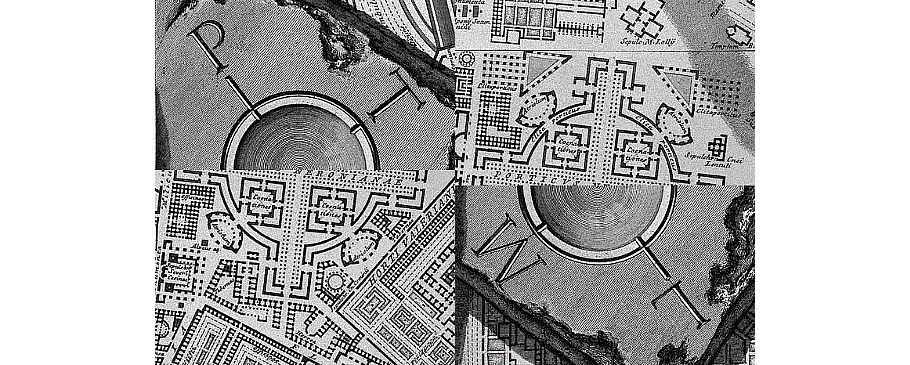
"...the inner circle of the Porticus Neronianae matches the circle of the compass/north arrow that Piranesi also delineated within the Ichnographia."
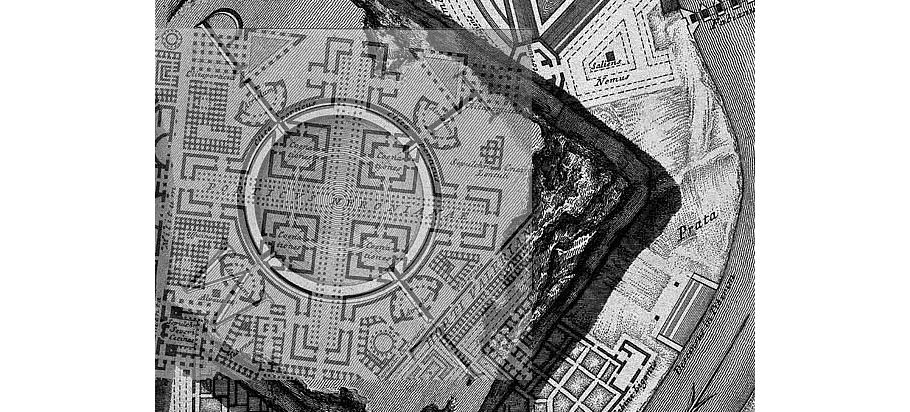
"The end of Livy Book 5 describes the rebuilding of Rome in the wake of the Gallic sack. The Romans were in a great hurry to rebuild, he writes, and for this reason there was no order to the new city, so that forma . . .urbis sit occupatae magis quam divisae similis, 'the arrangement of the city resembles that of a place taken over rather than portioned out'. Occupata here may be read as evoking Rome's recent occupation by the Gauls. Kraus draws our attention to Tacitus' reading of this Livian episode, which the latter author makes use of in his account of the destruction of Rome in the Neronian fire and the city's subsequent rebuilding. Tacitus' account presents Nero's fire as worse than the Gallic sack, for it causes destruction of monuments witnessing the origins of Rome. Rome is then rebuilt; large areas in the centre of the city are taken over for Nero's Domus Aurea. Nero's appropriation of the city is like that of a foreign enemy."
Catharine Edwards, Writing Rome: textual approaches to the city.
8 November 1812 Sunday
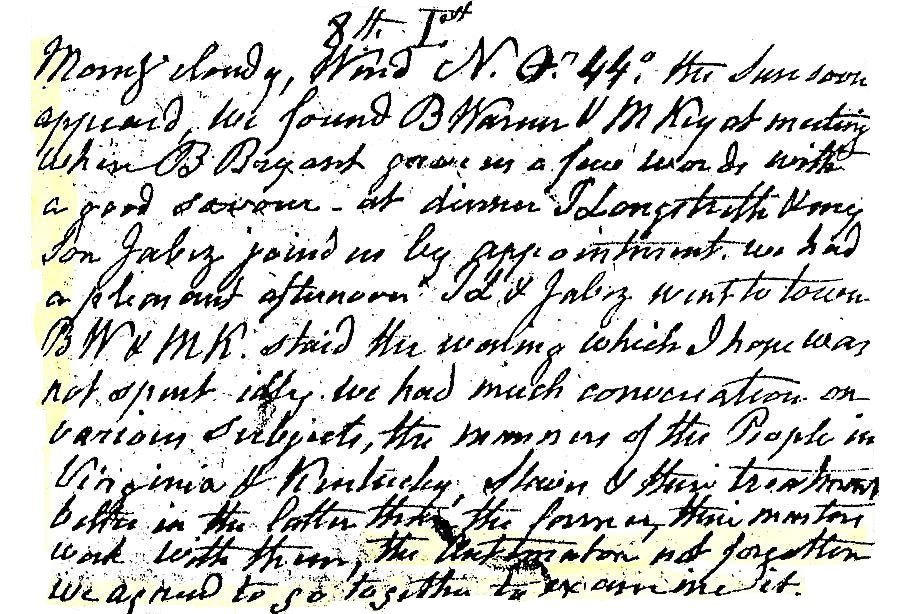
Morning cloudy. ... We found B. Warner and M. Key at meeting when B. B....esst with a good s..our. At dinner S. Longstreth and my son Jabez joined us by appointment. We had a pleasant afternoon. SL and Jabez went to town. Benjamin Warner and Marshall Key stayed this evening which I hope was not spent idly. We had much conversation on various subjects, the manners of the people in Virginia and Kentucky, slaves and their treatment better in the latter than in the former, their masters work with them. The atomaton not forgotten; we agree to go together to examine it.
8 November 2005
It rocked Eisenman in his chair...
The following is part of an unexpected email I received about an hour ago:
"I am a student at the Yale Graduate School of Architecture. We have Eisenman as a professor and he makes us analyze, among others, Piranesi's Campo Marzio. Along with my own analysis, I used some of the more striking parts of your very interesting and excellent analysis. It rocked Eisenman on his chair and he is now inquiring into your analysis, of which he had not heard."
8 November 2007
It rocked Eisenman on his chair...
8 November 324
feigning feints?
He says there are no streets there, so he doesn't know how the porticus operated throughout the Campo Marzio.
"posticus"
the buffalo were last
here in 1812
and the deer still eat
the flowers at night
perhaps reenacting
the antelope play
at home
indeed
8 November 2018
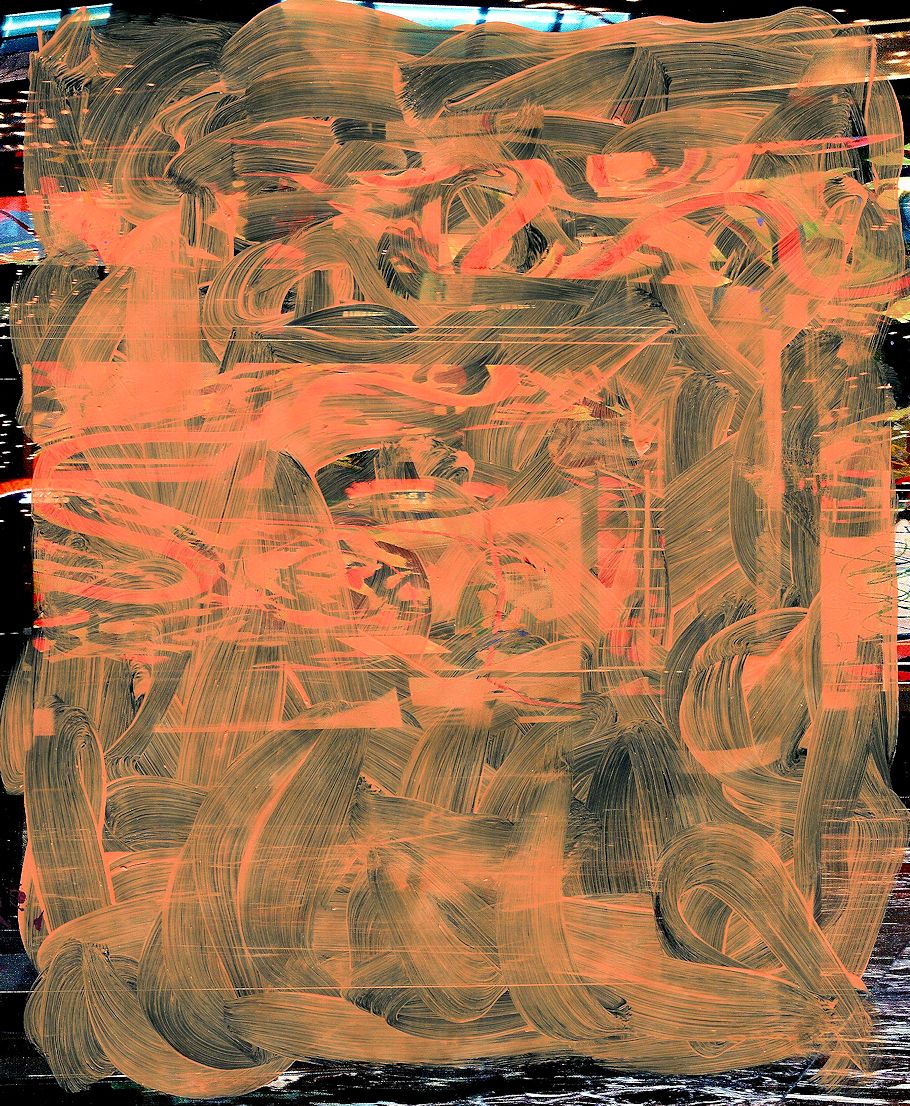
page painting 008
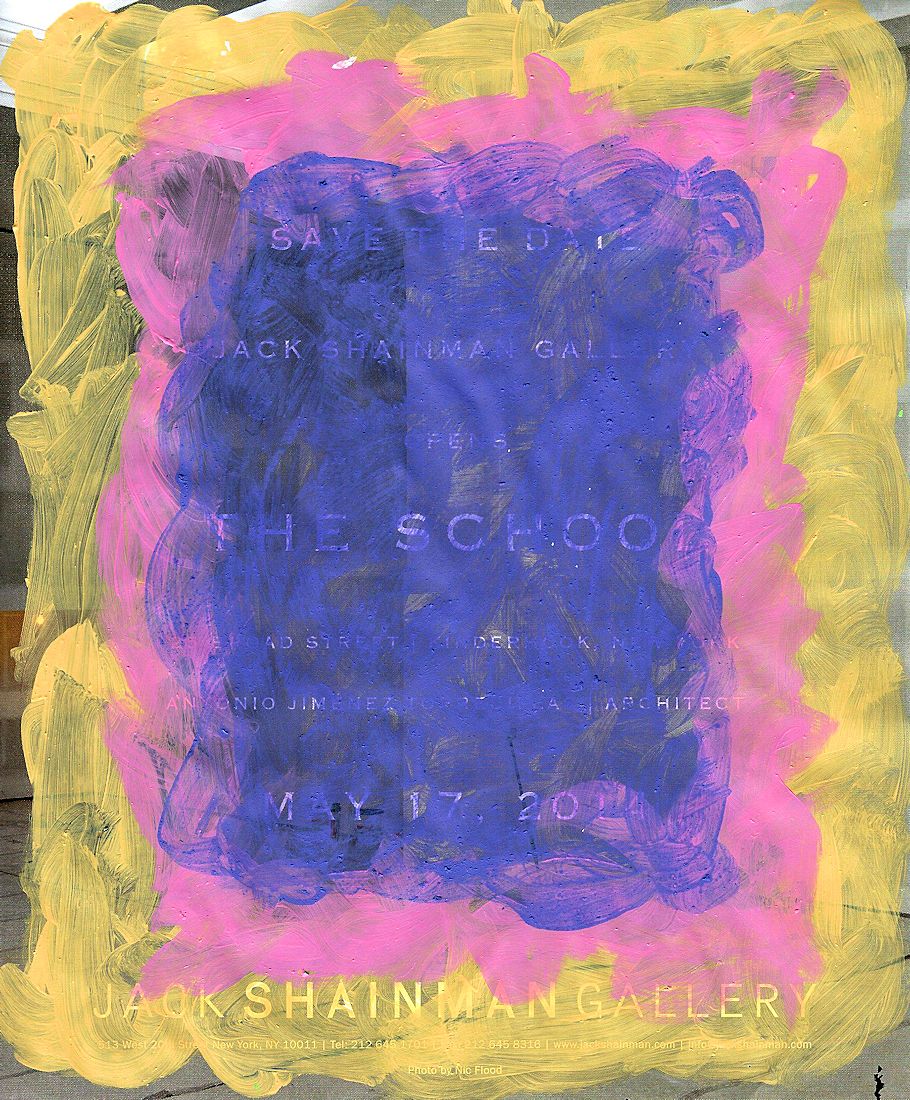
page painting 010
8 November 2022 Tuesday
|